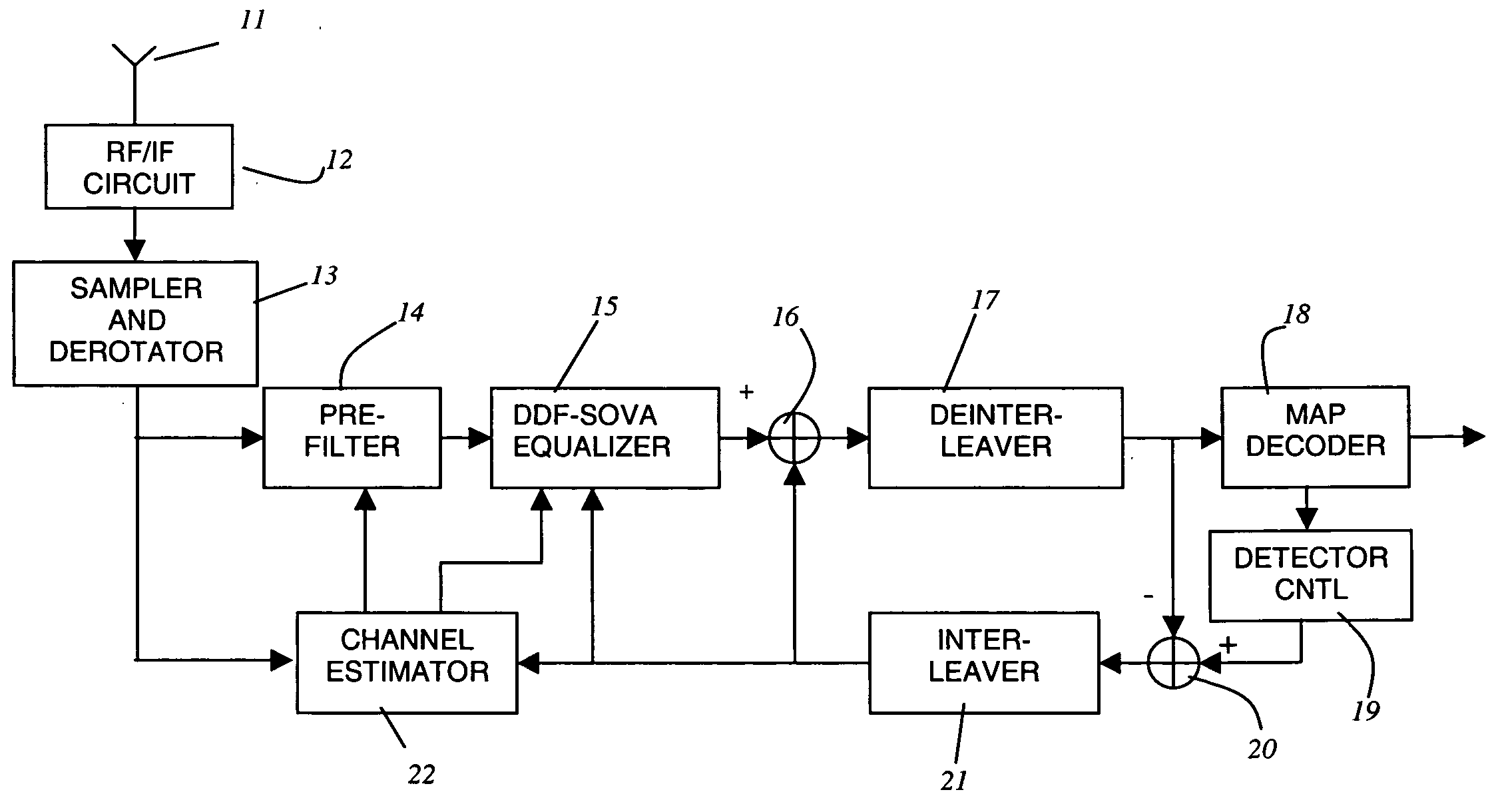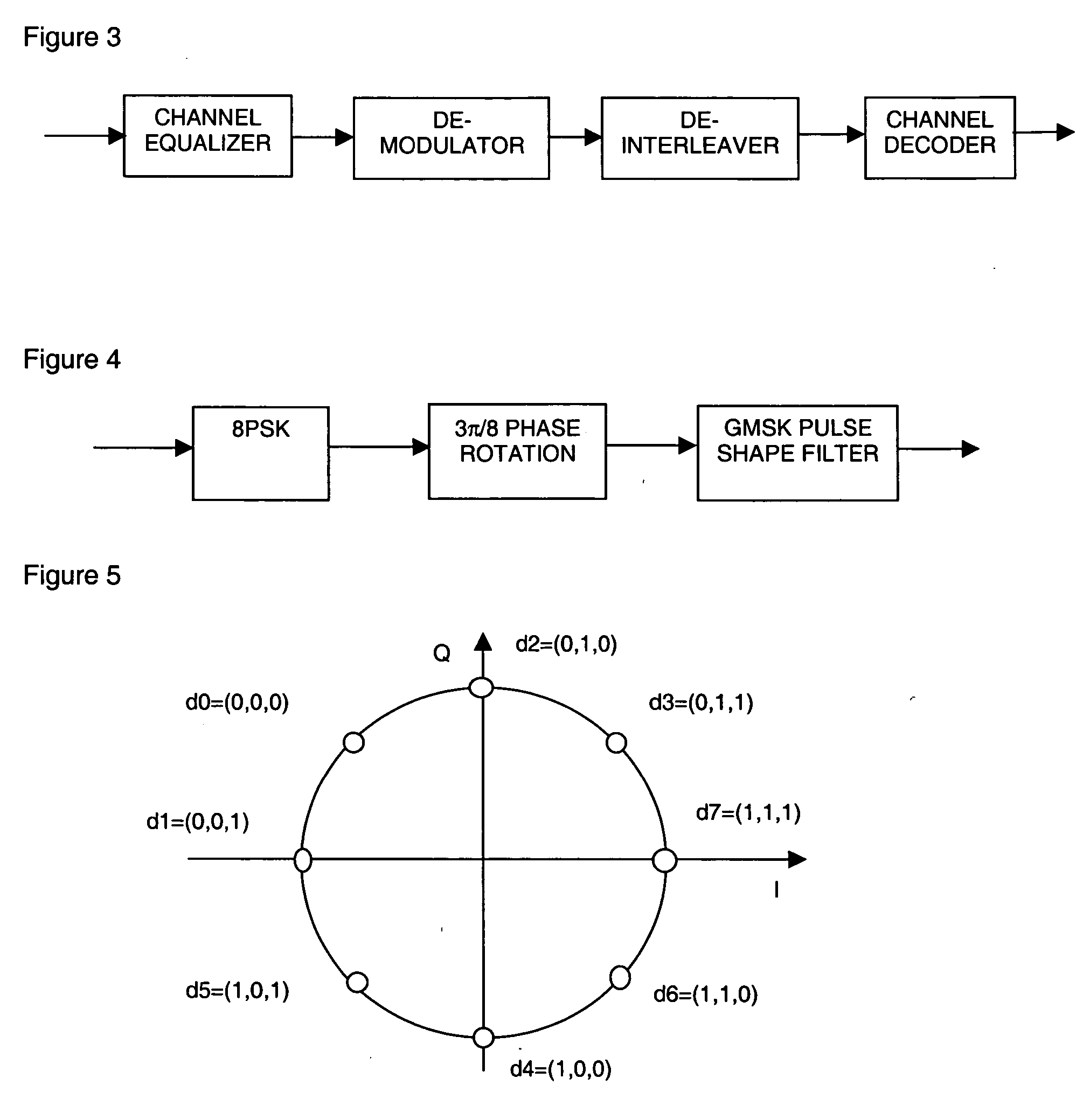High speed, low-cost process for the demodulation and detection in EDGE wireless cellular systems
a technology of process, which is applied in the field of high speed, low-cost process for demodulation and detection in edge wireless cellular system, can solve the problems of slow data rate that current cellular system can support, too expensive to implement hardware upon current technology, and the complexity of the maximum likelihood sequence estimation (mlse) based on the full-state trellis viterbi algorithm. long or even moderate delay spread
- Summary
- Abstract
- Description
- Claims
- Application Information
AI Technical Summary
Benefits of technology
Problems solved by technology
Method used
Image
Examples
Embodiment Construction
Detailed descriptions of the preferred embodiment are provided herein. It is to be understood, however, that the present invention may be embodied in various forms. Therefore, specific details disclosed herein are not to be interpreted as limiting, but rather as a basis for the claims and as a representative basis for teaching one skilled in the art to employ the present invention in virtually any appropriately detailed system, structure or manner.
Referring to FIG. 2, there is shown the basic block diagram of a baseband transmitter in a communications system. The input information bits first go into a channel encoder to introduce redundancy for the purpose of error correction at the receiver side. Then the coded bits are sent into the modulator to form the transmitted symbols according to the specific modulation rules such as QAM, PSK and so on. Those modulated symbols finally are transmitted into the non-perfect channel with intersymbol interference.
Referring to FIG. 3 shows t...
PUM
 Login to View More
Login to View More Abstract
Description
Claims
Application Information
 Login to View More
Login to View More - R&D
- Intellectual Property
- Life Sciences
- Materials
- Tech Scout
- Unparalleled Data Quality
- Higher Quality Content
- 60% Fewer Hallucinations
Browse by: Latest US Patents, China's latest patents, Technical Efficacy Thesaurus, Application Domain, Technology Topic, Popular Technical Reports.
© 2025 PatSnap. All rights reserved.Legal|Privacy policy|Modern Slavery Act Transparency Statement|Sitemap|About US| Contact US: help@patsnap.com



